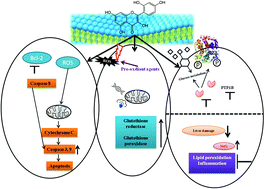Morin as an imminent functional food ingredient: an update on its enhanced efficacy in the treatment and prevention of metabolic syndromes
Abstract
Flavonoids represent polyphenolic plant secondary metabolites with a general structure of a 15-carbon skeleton comprising two phenyl rings and a heterocyclic ring. Over 5000 natural flavonoids (flavanones, flavanonols, and flavans) from various plants have been characterized. Several studies provide novel and promising insights into morin hydrate for its different biological activities against a series of metabolic syndromes. The present review is a rendition of its sources, chemistry, functional potency, and protective effects on metabolic syndromes ranging from cancer to brain injury. Most importantly this systematic review article also highlights the mechanisms of interest to morin-mediated management of metabolic disorders. The key mechanisms (anti-oxidative and anti-inflammatory) responsible for its therapeutic potential are well featured after collating the in vitro and in vivo study reports. As a whole, based on the prevailing information rationalizing its medicinal use, morin can be identified as a therapeutic agent for the expansion of human health.



 Please wait while we load your content...
Please wait while we load your content...